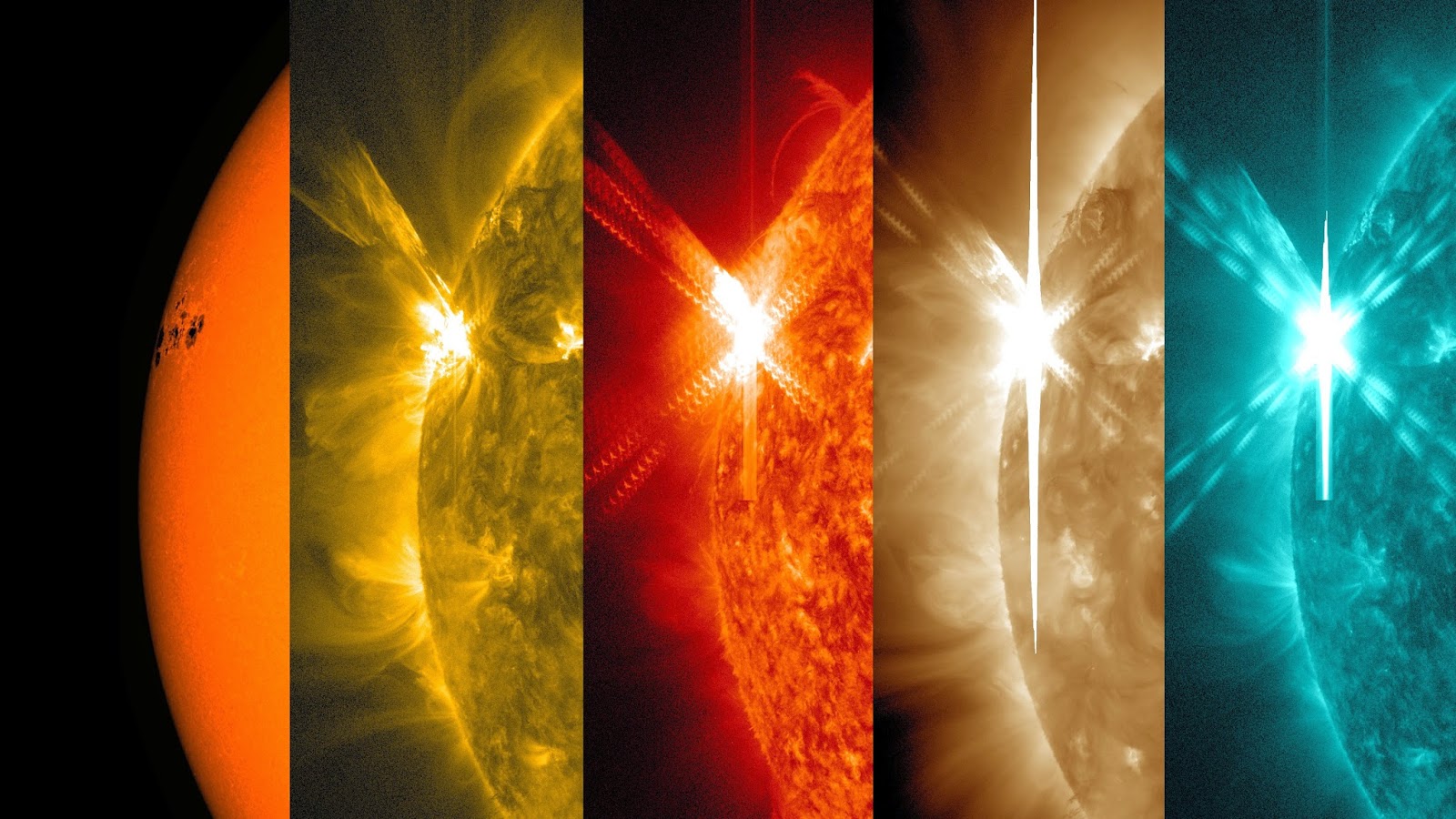NASA - Solar Dynamics Observatory (SDO) patch.
May 6, 2015
NASA's Solar Dynamics Observatory, which watches the sun constantly, captured these images of a significant solar flare – as seen in the bright flash on the left – peaking at 6:11 p.m. EDT on May 5, 2015. Each image shows a different wavelength of extreme ultraviolet light that highlights a different temperature of material on the sun. By comparing different images, scientists can better understand the movement of solar matter and energy during a flare. From left to right, the wavelengths are: visible light, 171 angstroms, 304 angstroms, 193 angstroms and 131 angstroms. Each wavelength has been colorized.
SDO Observes a Cinco de Mayo Solar Flare
Solar flares are powerful bursts of radiation. Harmful radiation from a flare cannot pass through Earth's atmosphere to physically affect humans on the ground, however -- when intense enough -- they can disturb the atmosphere in the layer where GPS and communications signals travel. This flare is classified as an X2.7-class flare. X-class denotes the most intense flares, while the number provides more information about its strength. An X2 is twice as intense as an X1, an X3 is three times as intense, and so on.
For see the image in diferent wavelengths, visit: http://www.nasa.gov/feature/goddard/nasas-sdo-observes-cinco-de-mayo-solar-flare
For more information about Solar Dynamics Observatory (SDO), visit: https://www.nasa.gov/mission_pages/sdo/main/index.html
Image, Text, Credits: NASA/SDO/Wiessinger/Sarah Loff.
Cheers, Orbiter.ch


